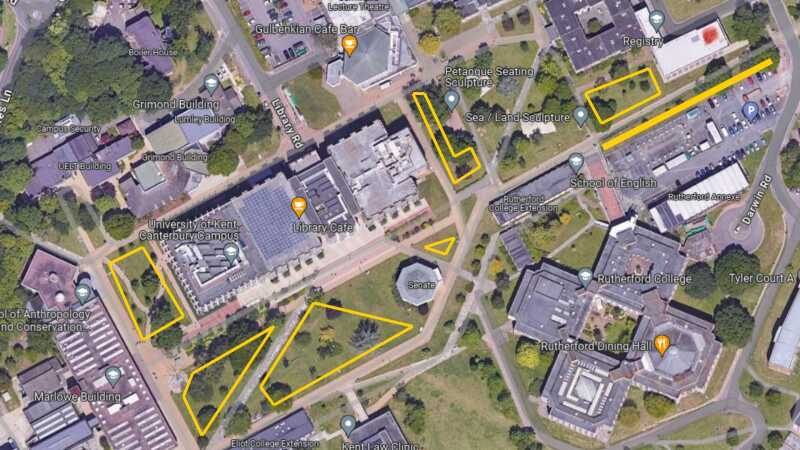Last year the University took part in No Mow May on central campus for the first time. This means central lawns that would normally be cut were left to grow throughout May.
We are pleased to be taking part again this year for 2024. We have updated some of our practices based on feedback from last year. You can read about these below.
Our main objectives for this project remain as follows:
- bring landscape management for biodiversity to the centre of campus to raise the level of consciousness about biodiversity issues
- seek a boost in vegetation and invertebrate diversity on central campus in line with the national No Mow May findings;
- test the assumption that we would face a lot of resistance to a project like this where we would be changing how central campus looked and the expectation for it to look neat and tidy
We already leave large areas of our grasslands throughout Spring and Summer as hay and wildflower meadows. We have publicly available plans on our grassland management and future plans for boosting the diversity of these existing meadows. No Mow May goes beyond this in asking people to leave traditionally mown lawns throughout May to boost the available food for pollinators and other invertebrates in this specific time. These lawns are amenity lawns that are usually mown fortnightly throughout this period.
If you would like to provide feedback on the project, please use the Feedback Form below.
Which lawns are included?
We have chosen a number of lawns on central campus to be included in this years No Mow May activities. We have tried to avoid spaces which are high traffic for events, marquees etc. We have also taken feedback from last year and have decided to mow around the edge of the lawns adjacent to paths to give the project an intentional look, rather than the lawns looking abandoned. We will also try and make sure that our signs remain in postion to provide explanation.
We balance the number of lawns selected with the maintenance capacity of the Landscape and Grounds Team to manage the lawns come June.

Managing clover mounds
Last year we discovered that we have a number of healthy patches of clover. Whilst these looked really lush, they grow quite tall and shade out everything below. This leaves some really bald patches on the lawn once mown later in the summer. We want to try and avoid this so you may see the Landscape and Ground's team selectively strimming these patches to allow other species to get some sun.
The weather will obviously have an effect on growth but we hope that you enjoy the changes to central campus over the course of May. For many it is an exciting time to see the campus transform to a lush green space that feels quite different. If you do get a chance, please do fill out a feedback form. “Excellent to be part of a University that is looking out for nature. Requires joined up thinking between the sustainability team and estates team. Well done University of Kent.” - Quote from 2023 feedback.




